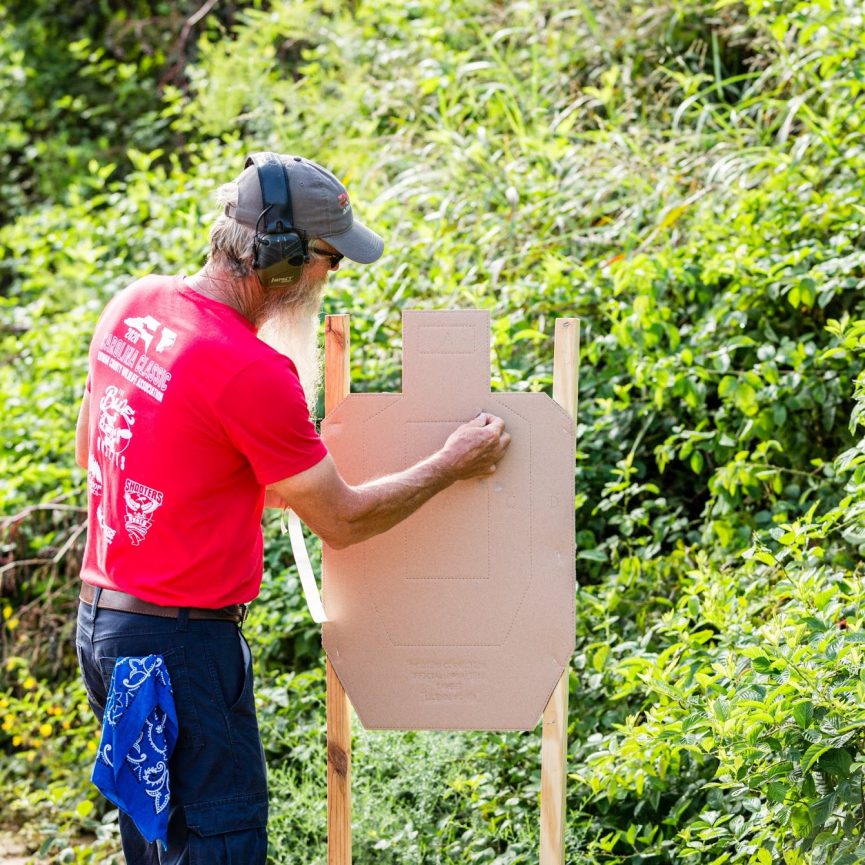It’s been a few months now since the 2020 Carolina Classic, and I wanted to reiterate all the things that went into the planning and execution of the match that went well, to hopefully be emulated by more matches in the future. This is the first of a series that will be posted, one each day, for the next five days.
- Match Format & Stage Inspection
- Walking the Prize Table
- Five Minute Walkthroughs
- Staff Reset
- Chrono: Trust, but verify
Match Format
The schedule for the match started on Thursday with the build day. The staff shot Friday in an all-day format, with 10-person squads.
Saturday had two half-day sessions with squads of 8 shooters starting at 8am and 1pm, with time scheduled in between sessions for the ROs to eat lunch and the afternoon competitors to inspect stages.
Sunday was the full-day session, starting at 10am with squads of 10 shooters each.
Competitors also had the option to shoot Friday with the expectation that they help paste and reset because it was first and foremost staff day. Some competitors did choose to pay their match fee and go this route. One shooter on my squad said it was easier for him to get time off work than to take time away from his family on the weekends and he prefers to shoot major matches during the week. Makes sense to me.
The half-day Saturday schedule definitely has its fans, particularly folks driving from out of state. A few folks drove up Saturday morning, looked at the stages from noon to 1, shot until 5, and then drove home the same day. It’s a lot of time on the road, but it saves a night in a hotel.
I was working the match, but if I weren’t, my preference would be the full-day Sunday format. With staff doing the paste and reset, you cycle through stages pretty quickly, so I like having the larger squad to give me extra time to prepare on each stage between shooting.
Stage Inspection
This match didn’t do anything particularly special, just what’s the norm for US matches: inspection of stages once competitors are done for the day, time in the morning if competitors show up early, and time between the morning and afternoon schedules on Saturday.
It’s worth noting that although matches with half-day formats will plan a break between morning and afternoon, if the morning schedule gets behind, that can quickly go out the window and the first afternoon squad starts as soon as the last morning one finishes. This is bad for the staff because they have no mid-day rest to eat their lunch, and bad for the half-day competitors who are robbed of their equal chance to inspect stages.
Thanks to staff reset, this hasn’t happened for either of the last two years here in NC. Morning competitors finish on time or early, staff get their chance to recharge for the afternoon, and afternoon competitors get a look at the stages if they like.
All of that said, the stages were designed not to require extensive walkthrough: no memory stages, no gotchas, no games. If you did only have the 5 minute walkthrough during the match (more on that later), you could at least come up with a workable stage plan for each stage. Of course, you could invest more time than that, but it was not a de facto requirement.
Join me tomorrow when I’ll talk about the process used at this match to walk the prize table.

